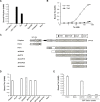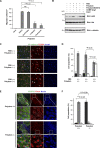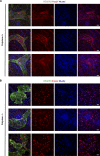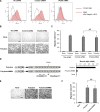Polydom/SVEP1 binds to Tie1 and promotes migration of lymphatic endothelial cells
- PMID: 37338522
- PMCID: PMC10281526
- DOI: 10.1083/jcb.202208047
Polydom/SVEP1 binds to Tie1 and promotes migration of lymphatic endothelial cells
Abstract
Polydom is an extracellular matrix protein involved in lymphatic vessel development. Polydom-deficient mice die immediately after birth due to defects in lymphatic vessel remodeling, but the mechanism involved is poorly understood. Here, we report that Polydom directly binds to Tie1, an orphan receptor in the Angiopoietin-Tie axis, and facilitates migration of lymphatic endothelial cells (LECs) in a Tie1-dependent manner. Polydom-induced LEC migration is diminished by PI3K inhibitors but not by an ERK inhibitor, suggesting that the PI3K/Akt signaling pathway is involved in Polydom-induced LEC migration. In line with this possibility, Akt phosphorylation in LECs is enhanced by Polydom although no significant Tie1 phosphorylation is induced by Polydom. LECs also exhibited nuclear exclusion of Foxo1, a signaling event downstream of Akt activation, which was impaired in Polydom-deficient mice. These findings indicate that Polydom is a physiological ligand for Tie1 and participates in lymphatic vessel development through activation of the PI3K/Akt pathway.
© 2023 Sato-Nishiuchi et al.
Conflict of interest statement
Disclosures: K. Sekiguchi reported personal fees from Matrixome, Inc., “other” from Nippi, Inc., grants from Mandom, Inc., and grants from Kao Corporation outside the submitted work. No other disclosures were reported.
Figures










Similar articles
-
Polydom Is an Extracellular Matrix Protein Involved in Lymphatic Vessel Remodeling.Circ Res. 2017 Apr 14;120(8):1276-1288. doi: 10.1161/CIRCRESAHA.116.308825. Epub 2017 Feb 8. Circ Res. 2017. PMID: 28179430
-
Angpt1 binding to Tie1 regulates the signaling required for lymphatic vessel development in zebrafish.Development. 2024 May 15;151(10):dev202269. doi: 10.1242/dev.202269. Epub 2024 May 28. Development. 2024. PMID: 38742432
-
TIE1-dependent lymphatic vascular remodeling is mediated by its second tyrosine kinase domain.Development. 2025 Jul 1;152(13):dev204469. doi: 10.1242/dev.204469. Epub 2025 Jun 27. Development. 2025. PMID: 40539480 Free PMC article.
-
Angiopoietin-Tie signalling in the cardiovascular and lymphatic systems.Clin Sci (Lond). 2017 Jan 1;131(1):87-103. doi: 10.1042/CS20160129. Clin Sci (Lond). 2017. PMID: 27941161 Free PMC article. Review.
-
[Advances of Angiopoietin-Tie axis in vascular and lymphatic system-related diseases].Sheng Wu Gong Cheng Xue Bao. 2021 Aug 25;37(8):2633-2644. doi: 10.13345/j.cjb.200522. Sheng Wu Gong Cheng Xue Bao. 2021. PMID: 34472284 Review. Chinese.
Cited by
-
The emerging Janus face of SVEP1 in development and disease.Trends Mol Med. 2023 Nov;29(11):939-950. doi: 10.1016/j.molmed.2023.08.002. Epub 2023 Sep 4. Trends Mol Med. 2023. PMID: 37673700 Free PMC article. Review.
-
TIE1 promotes cervical cancer progression via Basigin-matrix metalloproteinase axis.Int J Biol Sci. 2024 Apr 8;20(6):2297-2309. doi: 10.7150/ijbs.93667. eCollection 2024. Int J Biol Sci. 2024. PMID: 38617545 Free PMC article.
References
Publication types
MeSH terms
Substances
LinkOut - more resources
Full Text Sources
Molecular Biology Databases
Research Materials
Miscellaneous

